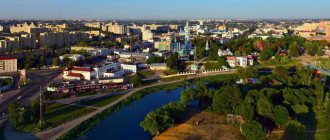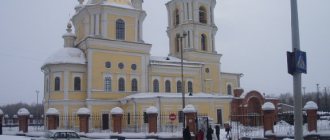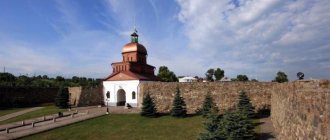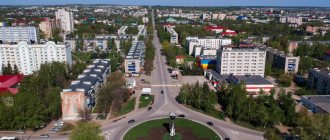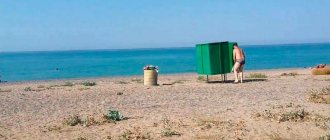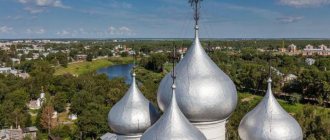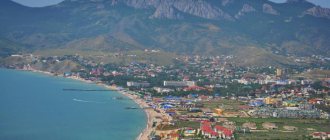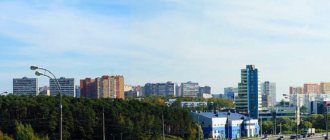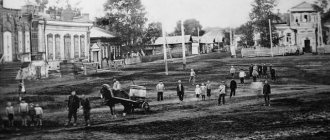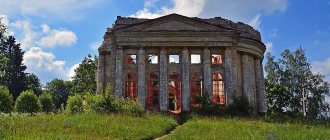Novokuznetsk is a city in the Kemerovo region of Russia, the administrative center of the Novokuznetsk municipal district of the Kemerovo region, forming the urban district of the city of Novokuznetsk. It is the second (after Kemerovo) in terms of number of inhabitants and the first in area, as well as the oldest city in the Kemerovo region.
Located in the south of Western Siberia, on both banks of the Tom River, in the southern part of the Kemerovo region.
The city was founded in 1618 as a fort near the confluence of the river. Condoms in the river Tom. In 1620, the fort was moved to a high terrace on the right bank of the river. Tom (in this place the Kuznetsk fortress is now located).
Novokuznetsk is the thirtieth most populous city in Russia; an important economic, transport and cultural center of Siberia. Population - 551,253 people (2016). The area of the city is 424 km². The city is the center of the Novokuznetsk (Kuzbass) agglomeration, which has a population of more than 1.3 million people and is the 12th largest in Russia.
Novokuznetsk is one of the largest metallurgical and coal mining centers in Russia. City Day is celebrated on the first Sunday in July.
Geographical position
Novokuznetsk is located on the territory adjacent to the Kuznetsk Basin. It stretches between the mountain ranges of the Salair Ridge and Alatau. It is located in the southern part of the Kemerovo region and is an important economic and industrial center of the region.
Where Novokuznetsk is located, the deep Tom River carries its waters to the Ob. City coordinates: latitude: 53° 45′ 21″ N, longitude: 87° 6′ 36″ E. Together with the villages adjacent to the municipality, it forms the Kuzbass agglomeration. The area of Novokuznetsk exceeds 420 km². Its territory is characterized by hilly landscape. The height difference is two hundred meters.
In addition to the Tom, in the vicinity of the place where Novokuznetsk is located, the Aba and Kondoma rivers flow. The first carries its waters from the western end of the Salair Ridge. The latter descends from the south. Outside the city, they form river valleys and large watersheds, which have a direct impact on the climatic conditions of the region.
Weather
The city is located in a zone of sharply continental climate. Summers in these parts can be hot, but winters are always harsh. Daily temperature fluctuations exceed 10 degrees. The climatic conditions of the region are influenced by the Kuznetsk Basin. Here it connects with Gornaya Shoria, Sapair and Alatau. The average annual temperature is +2 °C.
The frost-free period where Novokuznetsk is located lasts 123 days. There are not many rainy and cloudy days in the region. Their number barely exceeds 80. The annual volume of precipitation that falls in the region in the form of rain and snow is 600 mm. The lion's share of rain falls in the summer. Snow stays in the region for more than 160 days. The soil freezes to a depth of two meters. Negative air temperatures set in at the end of October. Frosts occur at night.
Where the city of Novokuznetsk is located, winter ends in early April. Summer lasts about 82 days. It begins in June and gives way to autumn in the twenties of August. Air masses enter the region from the south and southwest. There may be some fog in the morning.
Other sights of Novokuznetsk
Those who come to the city for the first time will always have something to do. You should definitely visit the city park named after Gagarin. Here you can hide in the summer heat, and there are many attractions for lovers of active recreation. There are cafes and restaurants in the immediate vicinity.
The singing fountain may also be interesting for visitors. This modern architectural structure is located in the city center. Jets of water shoot out from under the bars and classical music is heard. Although local residents claim that for the last few years the tunes have been played only on weekends.
Those who come to Novokuznetsk in winter should definitely visit the Forest Republic. This is a convenient ski resort, which is located outside the city. In winter, a regular bus runs here. You can easily get there by your own transport. Reviews show that this place is ideal for beginner skiers.
Seasons
In January the average air temperature is -15 °C. This is the coldest month of winter in the area where the city of Novokuznetsk is located. During this period, the thermometer can drop to -47 °C. January is characterized by an abundance of snow. Severe snowstorms are possible, which can lead to drifts on roads and downed high-voltage lines. The normal precipitation is 24 mm.
It's already a little warmer in February. The average temperature is -13 °C. There is less precipitation, usually no more than 20 mm. There is a thaw in March. The thermometer stays at -6 °C. Precipitation is approximately 16 mm. April brings rain to Novokuznetsk. It is getting much warmer and the humidity level is rising. The average daily temperature is +3 °C, but frost is still possible.
Temperatures in the region where Novokuznetsk is located can drop below -26 °C at night. In May, buds bloom on the trees and the first foliage appears. During the day the thermometer shows +11 °C, but after sunset it can exceed -8 °C.
At the same time, the maximum air temperature recorded in the second half of the month was almost +35 °C. June is the beginning of the calendar summer. The air warms up to +35 °C, and in July to +36 °C. August is also hot. In summer, fires are possible that cover the steppe and forest zones.
Autumn colors the part of Russia where Novokuznetsk is located in all shades of yellow already in September. It rains much less. The days become cool and the nights become cold. In November, the thermometer can reach -35 °C. In December it drops below -40 °C. The average monthly temperature is -13 °C.
Ecology
The part of the Kemerovo region where Novokuznetsk is located is characterized by high levels of air pollution. Every year, scientists record excess levels of benzopyrene content by 5 times, formaldehyde by 3 times, hydrogen fluoride by 1.4 times, and nitrogen dioxide by 1.3 times. According to data for previous periods, more than 320,000 tons of toxic substances were released into the city’s atmosphere. Carbon monoxide accounts for 60%, sulfur dioxide - 12%. In addition to them, methane and nitrogen dioxide plus solid fractions are present in the air.
Enterprises make a significant “contribution” to the pollution of the environment and the area where Novokuznetsk is located. What industry are they in? The factories represent ferrous metallurgy. The list of potentially hazardous industries is headed by coal industry plants. The first line in the ranking of enterprises that are recognized as the main air polluters is occupied by ZSMK OJSC. It is followed by mines, an aluminum plant, a sinter plant, and a thermal power plant.
The maximum concentration of toxic elements was recorded where the city of Novokuznetsk is located. What region of Russia can boast of such gas pollution? Most regions are far from Kuzbass. Vehicles make their contribution to the environmental situation. There are more than 150,000 vehicles registered in the municipality, the gross volume of emissions produced by them exceeds 76,000 tons. The settlement became the seventh largest in Russia in terms of the amount of industrial waste.
Ecological problems
The quality of life has noticeably deteriorated over the past decade in the region where the city of Novokuznetsk is located. In which region of Russia are there three large landfills for storing and processing solid household waste? The area of RUSAL, located in the Ordzhonikidze district of the region, is six square kilometers. Also in Kuzbass there are testing grounds “Evraz” with an area of 3.5 km² and “Ekoland” in the Zavodskoy district, which occupies 0.5 km².
Every year about 11 million tons of waste are generated in Novokuznetsk. The degree of radiation exposure in the Kemerovo region does not exceed the established norm. The radiation is natural and is caused by the presence of natural sources.
In 2011, Novokuznetsk took fourth place in the all-Russian ranking of the most polluted settlements in the country. The city index was 22.05. The soil in the vicinity of the municipality is saturated with water-soluble fluoride compounds. Their volume exceeds 1 MPC. The amount of acid-soluble forms of zinc and lead gradually increases. They are localized in the surface layers of the soil.
Thirty percent of all pulmonary diseases diagnosed among residents of Novokuznetsk are caused by toxic emissions from the cement plant. At the moment, environmental activists in the region are insisting on the closure of this enterprise. Eight years ago, the Kuzbass Waste Recyclers Association was founded in the city. Its structural division includes about fourteen industrial enterprises in the region.
They handle over one hundred and fifty types of household solid waste. They produce products from recycled materials. Develop the necessary environmental documentation. The waste is used to make soft coverings for children's playgrounds, garden utensils, building materials, bags, and fireproof materials.
Religion
There are many religious communities operating in the locality. The Orthodox one remains the largest. The most visited is the Transfiguration Cathedral. This is the first temple in Novokuznetsk, which was built in 1618. For several centuries it was the main temple of the city. In 1835 the cathedral was rebuilt from stone.
The Church of the Holy Apostles Peter and Paul also deserves attention. The cathedral was built in 1999. The temple has a library with a collection of more than 700 thousand copies. In total, there are more than 15 Orthodox churches in Novokuznetsk.
Since 1993, the Jehovah's Witnesses organization has officially operated in the city. There is also a local Muslim organization. In addition, some local residents profess Judaism, Protestantism, and Catholicism.
Historical reference
Novokuznetsk is recognized as the oldest settlement located on the territory of modern Siberia. At the beginning of the 19th century, there was a wooden fortress in its place. The settlement was founded at the beginning of the 17th century and occupied land near the confluence of the Kondoma River with the Tom River. Until the 19th century, there were practically no stone buildings in the city. This area was famous for the fact that next to the settlement there was a prison in which especially dangerous criminals served their sentences.
The current industrial giant grew up next to the ancient fortress. In 1929, the general development plan was approved. The architects included squares and squares, parks and transport routes into the project. Hospitals and clinics, the building of the Drama Theater and a sports arena were erected in the shortest possible time. The city was formed by order of the Presidium of the USSR Central Executive Committee. Thus, in 1931, city status was assigned to a small workers’ settlement that was formed next to the metallurgical plant. In 1932, the settlements of Kuznetsk and Novokuznetsk were united into a municipality.
After the outbreak of World War II, the Vilna Infantry School was evacuated to the city, which became the main base where officer training was carried out. In 1964, ZSMK was erected and launched. In 1971, a circus operated in Novokuznetsk, library, administration and hotel buildings appeared.
Education
There are many educational institutions in Novokuznetsk. Great attention is paid to preschool development. The city has 11 public and several private schools. You can hear a lot of good reviews about gymnasium No. 10. This is the oldest municipal educational institution in Novokuznetsk. It was founded in 1790. In a four-story standard building, children aged 6 to 17 years can receive education.
There are several vocational schools and technical schools in Novokuznetsk. There are also continuing education institutions. There are also several universities. The most popular is the Siberian State Industrial University, which was founded in 1930. The institution has several scientific schools in economics, chemistry, metallurgy, etc. The Novokuznetsk Employment Center always offers fresh vacancies for young professionals.
Attention is also paid to the development of children. The city has six art schools, three music schools and two art schools. There is also a city station for young naturalists.
Flora
The nature of Novokuznetsk is unique. Some plants have been preserved from the post-glacial period. There are no such islands of pristine flora anywhere else in the world. The landscapes of these places boast snow-covered mountain peaks, the foothills of which are buried in the dark greenery of forest tracts. Crystal clear lakes are adjacent to deep rivers, where fishing is still carried out.
The foot of the ridges hide labyrinths of underground caves, in the depths of which streams of deep-sea springs gush out. Kuzbass meadows resemble alpine plains. A few minutes' drive from the city begins the possessions of the Kuznetsk Alatau. This is a mountain range that is recognized as a nature reserve of national importance. It is a complex of peaks of relatively low height. All together they form a ring, inside of which there are water meadows and valleys of Siberian rivers.
National parks
The surroundings of Novokuznetsk are not only rocks, but also steppe, forest-steppe and forest zones. Coniferous and deciduous tracts grow around the city. At the tops of the mountains there are subalpine plains, tundra and rock formations. The crust in some areas of Alatau can reach fifteen meters in height. The rarest glaciers for the Siberian region are located here. There are 32 of them in total. The territory they occupy exceeds 1.5 km².
Shorsky Park is another amazingly beautiful place located in the Sverdlovsk region. It spreads over areas of black taiga and cedar tracts, which have been preserved in their original form. Its relief is complex and varied. It is crisscrossed by the flows of mountain rivers.
The main water artery is the bed of the Mras-Su River. Shoria is often compared to the Alps. Another reserve invites you to enjoy the landscapes of the Kemerovo region. “Red Hill” is a landscape museum located in the open air on the banks of the Tom River. Its epicenter is Burnt Mountain.
Healthcare
The city administration pays considerable attention to the health of the population. Therefore, healthcare institutions are supported from all sides. There are several city clinical hospitals where patients can receive high-quality care from specialists of a narrow and broad profile. There is also an institute for the rehabilitation of disabled people and an institute for the hygiene of occupational diseases.
You can hear a lot of good reviews about the Novokuznetsk perinatal center. Here you can agree on the upcoming birth. In addition, there are family planning clinics. Specialists provide their assistance to couples who have been unable to conceive a child for a long time. If indicated, in vitro fertilization can be performed. It serves not only the indigenous population of Novokuznetsk, but also visitors.
You can hear a lot of good reviews about the Novokuznetsk State Institute for Advanced Medical Studies. Internships are available to specialists in the following specialties: obstetrics, dermatology, maxillofacial surgery, dentistry, therapy, pediatrics, psychiatry. The Novokuznetsk Employment Center also offers vacancies for doctors.
Population
The ethnic composition of Novokuznetsk residents is predominantly Russian. They make up 95%. Also registered in the city are Tatars, Ukrainians, Germans, Azerbaijanis, Armenians, Shors, Belarusians, and Chuvashs. According to 2021 data, there are five men for every six women. Currently, the number of residents has exceeded 550,000 people.
Administrative structure
Novokuznetsk is a city of regional subordination, despite its impressive size. Within its borders there is a municipal entity - Novokuznetsk urban district. The settlement has six intra-city districts. The largest of them is Zavodskoy. As of 2021, more than 97 thousand people live here. The smallest is the Kuznetsk district with an area of only 36 square meters. km. 49 thousand people live here.
The authorities are represented by the Novokuznetsk city council, the mayor of the city, the city control committee and the city administration. Courts are also open. Experts believe that power in Novokuznetsk is structured correctly. The population independently elects deputies to the city council in 18 districts. The last elections were held in September 2021.
